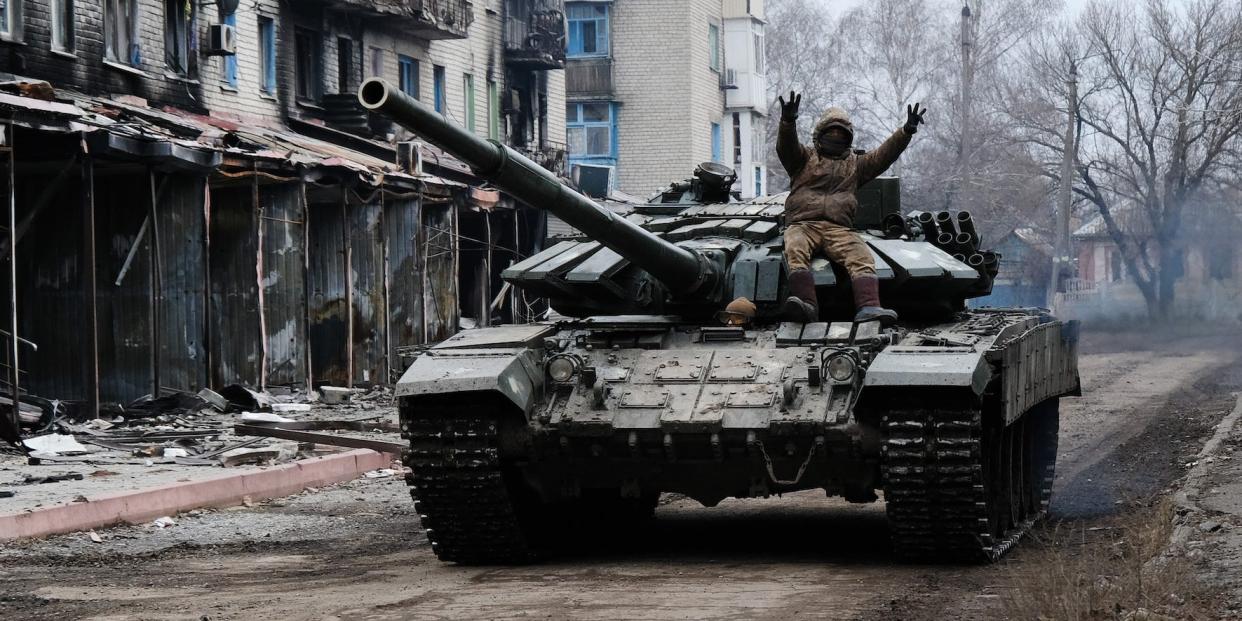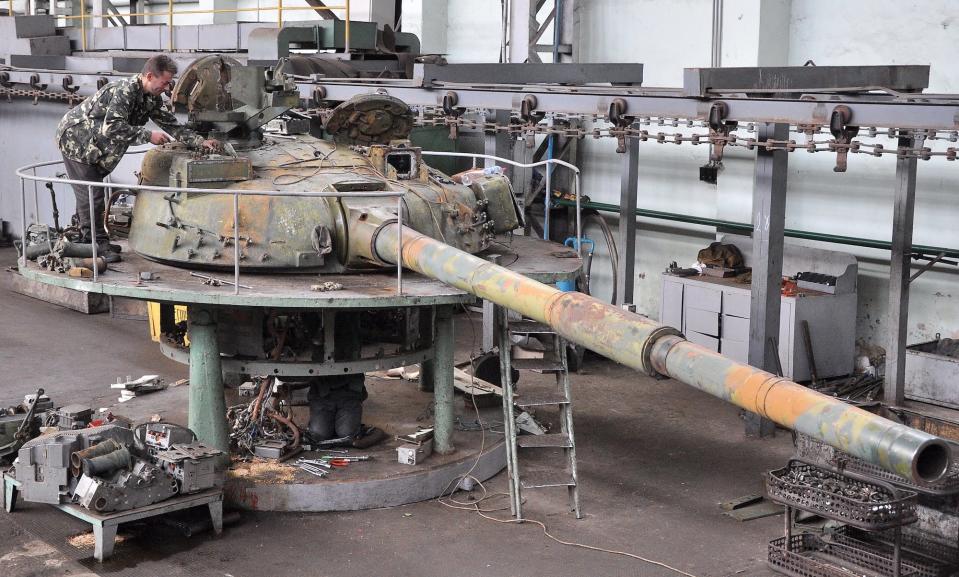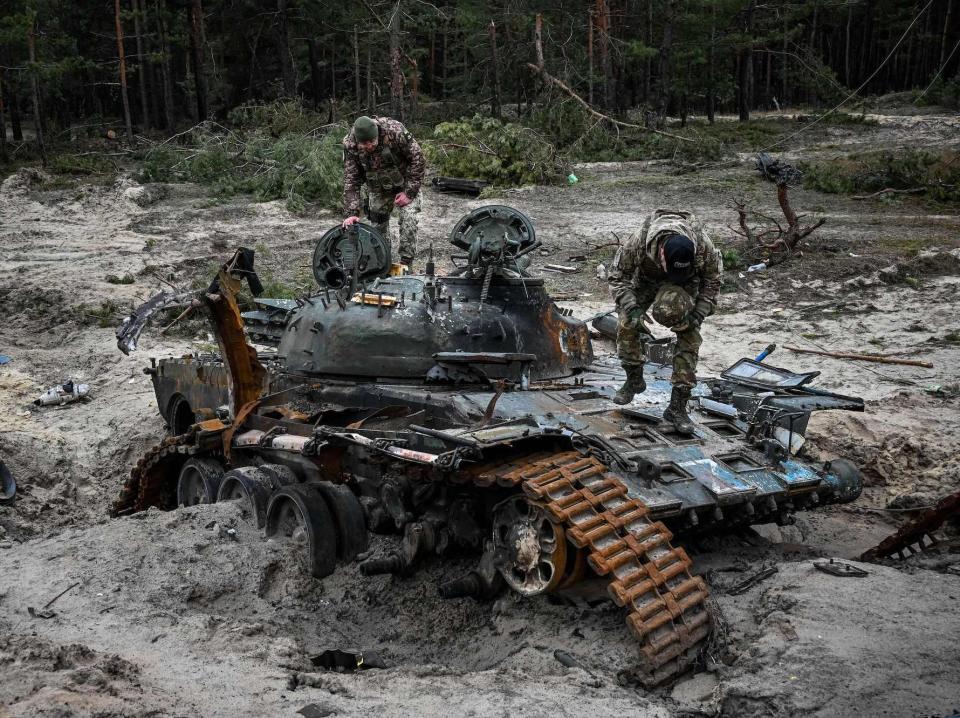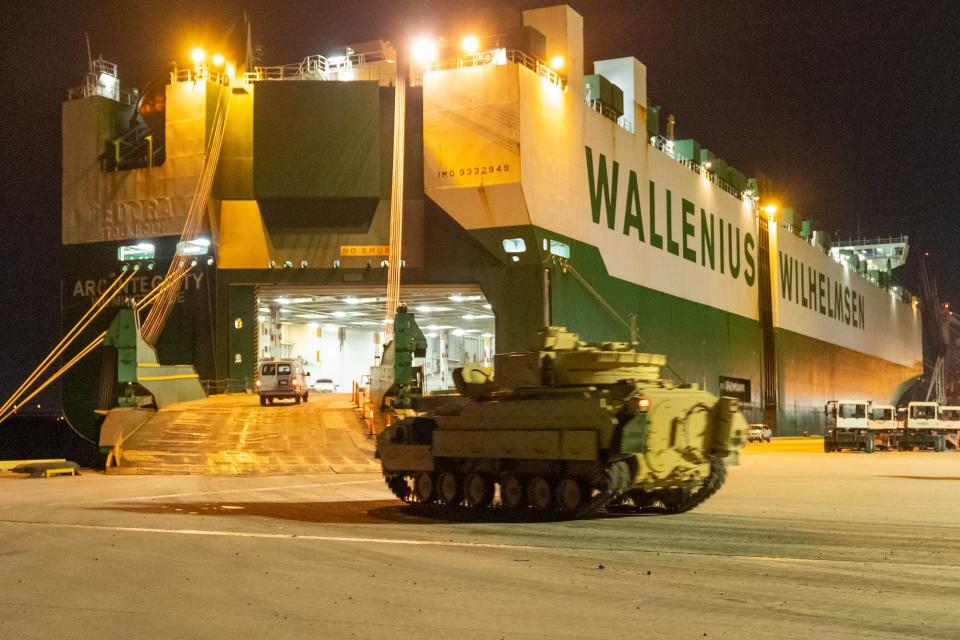Rare battlefield footage shows how Ukraine's upgraded Soviet-era tanks are outperforming Russia's upgraded Soviet-era tanks

When Russia attacked Ukraine in February 2022, their militaries operated many of the same tanks.
Ukraine upgraded many of its tanks before the war, but Russia also had newer, higher-quality tanks.
As the war approaches its one-year mark, several countries have pledge to give Ukraine new tanks.
A rare video from the frontlines shows one of Ukraine's upgraded Soviet-era tanks outperforming one of its newer Russian adversaries.
In the footage, published online in December, a Ukrainian T-64BV and a Russian T-72B3 tank fought a deadly duel in the east of the country. Despite being older, the Ukrainian armor took out its Russian adversary with a single long-distance shot.
A Ukrainian drone recorded the fight. On the outskirts of a destroyed town, the Ukrainian tank is advances down a road, straight toward the Russian tank.
—Rob Lee (@RALee85) December 11, 2022
Without stopping, the Ukrainian tank fires a round at its adversary. After a direct hit, the Russian T-72B3 explodes.
In technical terms, the tanks Russia has deployed are often newer and more advanced than the Ukrainian tanks they're facing, but the victory of the Ukrainian crew is a testament not only to the quality of their training but to the skill of their engineers and mechanics, who upgraded many of the older, Soviet-designed models into the tanks Ukraine is now fielding.
Update or buy new?

As Kyiv sought to modernize its military following Russia's 2014 attack, it had to decide between purchasing a battalion of new armor — about 50 tanks — or modernizing as many as four battalions of older tanks, which could be done for the same price, according to a Royal United Services Institute report on the first several months of the war.
It chose the latter and updated part of its T-64 and T-72 fleets. The modernization packages included digital radios, internal communications, navigation systems, thermal sights, and modified dynamic protection, among other upgrades. Since then, the West has helped Ukraine modernize more of its aging Soviet-era tanks.
When the war began, however, the 2,800 "combat-ready tanks" in Russia's invasion force vastly outnumbered the Ukraine military's total of about 900 tanks, according to the report.

Many of the tanks in those two forces were the same models and had similar vulnerabilities — one of which was demonstrated vividly in the early months of the war.
Soviet- and Russian-made tanks are designed for a crew of three — driver, gunner, and commander. Instead of a loader they have an automated loading system, which stores ammunition in the turret.
With limited protection in the turret and rounds stored elsewhere in the tank, enemy fire can more easily detonate the tank's ammunition, causing a "jack-in-the-box" effect that sends the turret flying sky-high.
Western tanks are designed with a sealed ammunition storage space and have fourth crew member who loads rounds into the gun.
More victories, better weapons

Ukraine's requests for newer, more advanced Western-made tanks to replace its older, Soviet-era tanks — some of them older than the troops using them — are longstanding, but before the war, there were financial and logistical limits on the kinds of weapons Ukraine could acquire.
When the war began, pressure from Russia led Kyiv and its supporters to focus on weapons that were familiar to Ukrainian troops and could be used right away, such as Soviet-origin Mi-17 helicopters and T-72 tanks, or that would be easier to integrate, such as M113 armored personnel carriers, older air-defense systems, and low-tech drones.
But in late summer and the fall, Ukraine took the initiative, forcing Russian troops into retreat. The battlefield has largely stabilized, and Ukraine can now afford to send some troops to train for more complicated operations using more complex weapons.
Ukrainian troops this month began training for combined-arms operations — which require coordination between aircraft, ground troops, artillery, and armored forces — and have begun or will soon begin training on other weapons, including the US-made Patriot air-defense system and Western armored vehicles.

US-made Abrams, German-designed Leopards, and British-built Challenger 2 tanks are some of the more than 300 heavy tanks that have been promised to Ukraine in recent weeks.
Despite growing arguments about the relevance of tanks on modern battlefields, both Russia and Ukraine have employed tanks effectively and routinely rely on tanks to break their adversary's defenses, even with the proliferation of anti-tank weapons.
Ukraine claims to have destroyed or captured more than 3,000 Russian tanks, though Oryx, an open-source investigation outlet, has only visually verified about 1,600 of those.
As of January 25, the US has committed more than $27.1 billion in security assistance to Ukraine since Russia attacked on February 24, 2022 — a total of less than 5% of the US defense budget that has helped destroy thousands of Russian tanks, armored vehicles, and artillery pieces.
Stavros Atlamazoglou is a defense journalist specializing in special operations, a Hellenic Army veteran (national service with the 575th Marine Battalion and Army HQ), and a Johns Hopkins University graduate. He is working toward a master's degree in strategy and cybersecurity at Johns Hopkins' School of Advanced International Studies.
Read the original article on Business Insider

